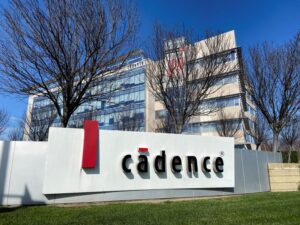Cadence Design Systems Faces Headwinds: A Closer Look at the Challenges Ahead
In recent financial news, Cadence Design Systems, a major player in chip design software, provided a disappointing forecast for the upcoming fiscal year, projecting revenue and profit figures that fell short of analysts’ expectations. This trend indicates a broader issue of decreasing demand as clients tighten their spending amid an economic slowdown.
After announcing its projections, shares of the San Jose-based company dropped by 5% in after-hours trading, reflecting investor concerns. Cadence is no stranger to volatility; it serves a wide array of clients, including high-profile companies such as Arm Holdings, Nvidia, and Tesla. The company specializes in software that supports the intricate design processes of everything from semiconductors to jet engines, as well as providing computing systems tailored for these complex applications.
Analysts from Berenberg outlined expectations for continued muted demand for Cadence’s system design and analysis products, primarily due to an ongoing downturn in the automotive market, which has been a significant component of their clientele. This trend raises important questions about growth strategies and revenue resilience in an industry heavily influenced by technological trends and economic factors.
Compounding these challenges, a notable percentage of Cadence’s business is tied to China, where further restrictions from the U.S. government on semiconductor technology sales could severely impact revenues. Industry watchers have pointed out that these restrictions could disrupt partnerships and contracts, ultimately affecting Cadence’s growth trajectory if new revenue streams are not secured.
Moreover, competitive pressures within the semiconductor software landscape are intensifying, particularly with rival Synopsys exploring a $35 billion cash-and-stock acquisition of engineering software firm Ansys. This potential shift could disrupt Cadence’s market position, requiring a strategic reassessment to maintain its foothold against formidable competition.
For fiscal year 2025, Cadence estimates revenue between $5.14 billion and $5.22 billion, a figure that undercuts analysts’ average prediction of $5.25 billion. In terms of profitability, the company’s forecast suggests earnings between $6.65 and $6.75 per share, again falling short of the consensus estimate of $6.83 per share.
On a more optimistic note, the fourth quarter of the previous fiscal year yielded positive growth, with revenue reaching $1.36 billion, marking a 26.8% increase year-over-year. Additionally, the company exceeded earnings expectations slightly, reporting adjusted earnings of $1.88 per share, compared to the consensus of $1.82. While these figures provide a glimpse of resilience, they also serve as a reminder of the broader issues at play.
As we examine Cadence Design Systems’ latest financials and market dynamics, it’s prudent for investors to consider how the convergence of economic pressures, geopolitical factors, and competitive threats may influence the company’s future. Strategies to diversify revenue streams, enhance operational efficiency, and foster innovation will be key in navigating these challenging waters.
In the ever-evolving tech landscape, staying ahead of market trends will be paramount for Cadence. Investors should keep a close eye on how the company adapts and responds to these emerging challenges. By understanding the full scope of industry dynamics, you can make informed decisions that align with your investment strategy and goals in a volatile market environment.
Stay tuned as we continue to provide insights and analysis on developments in technology and finance.

